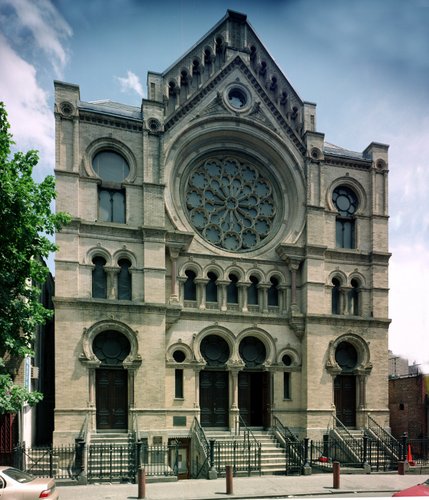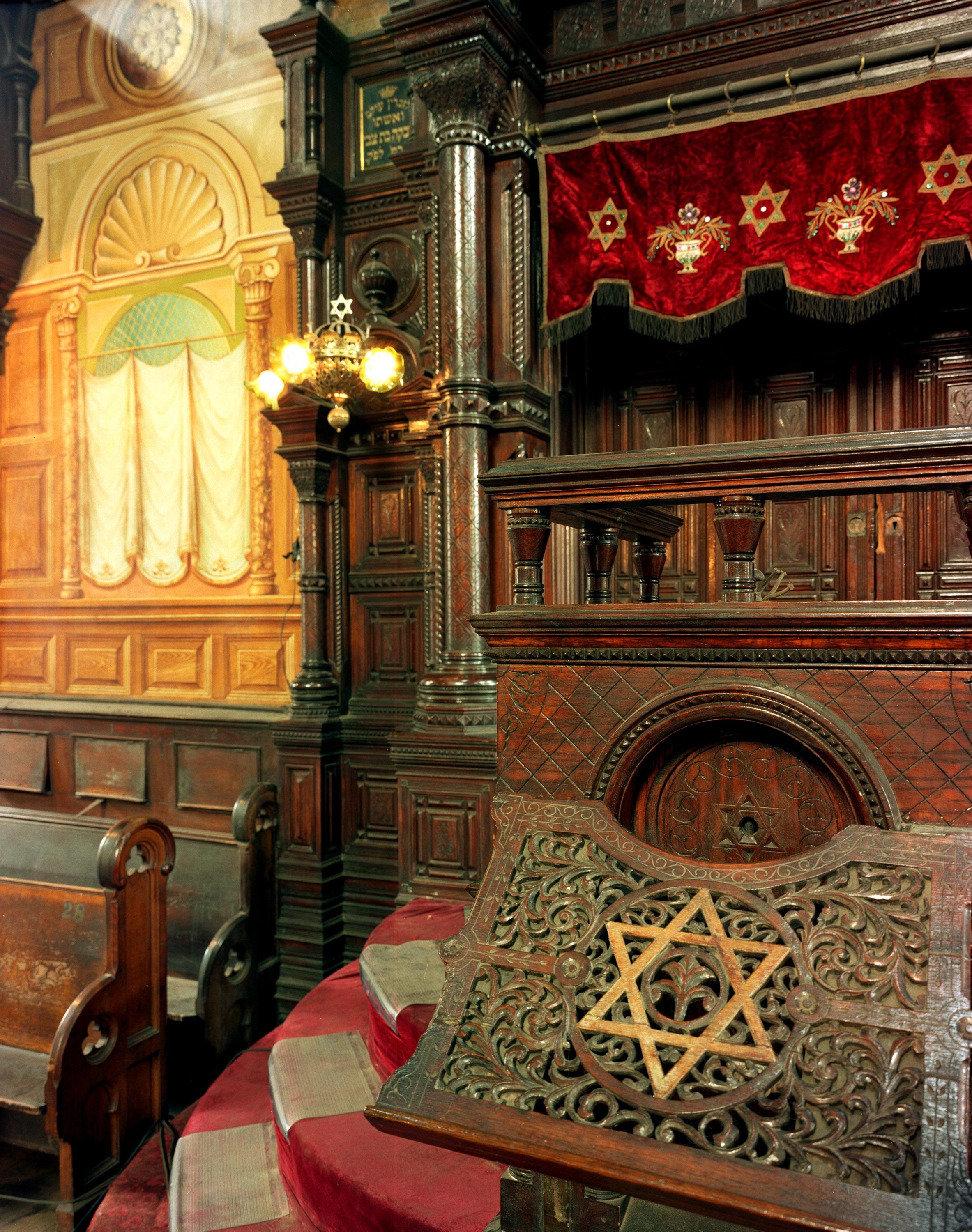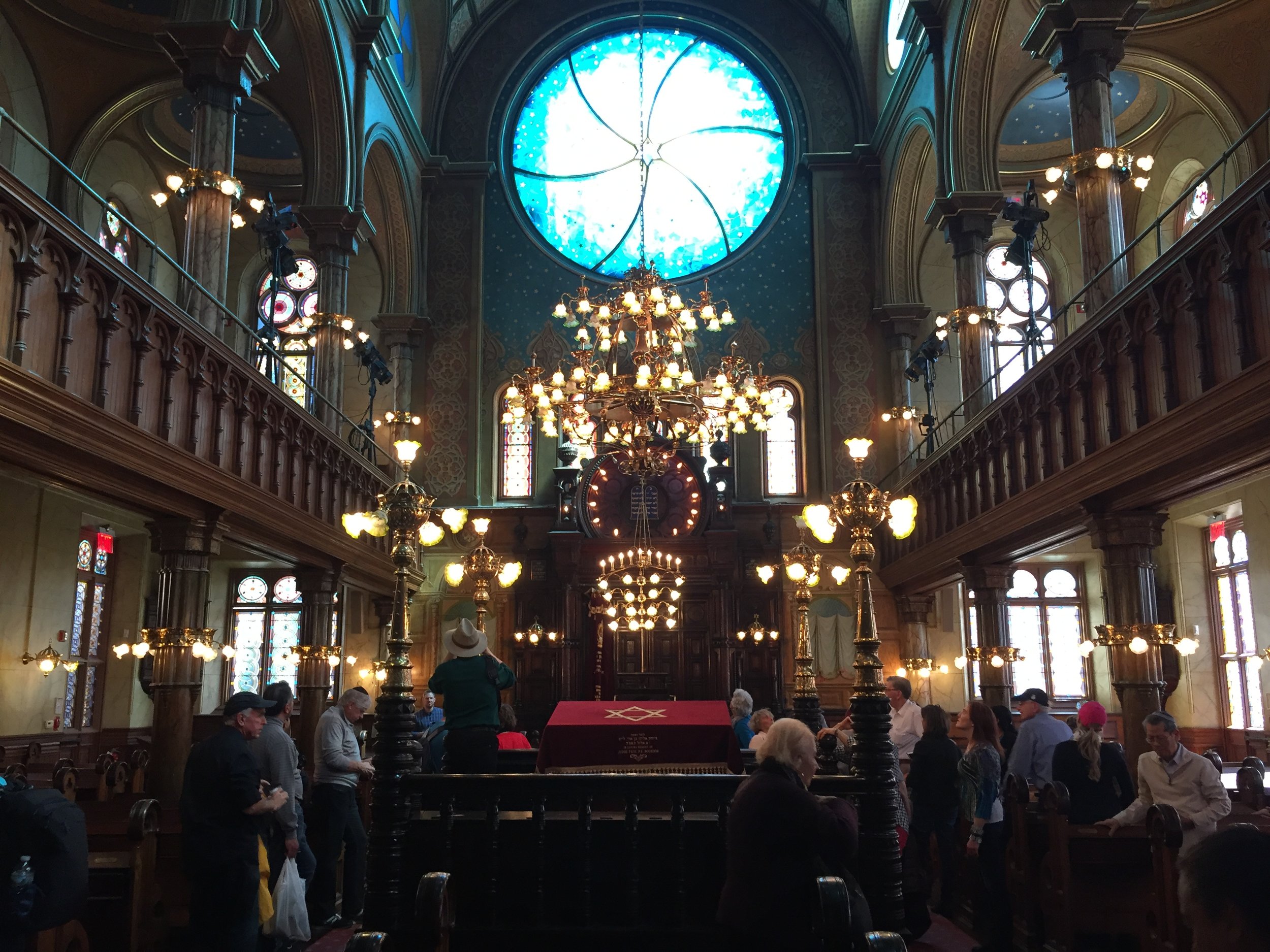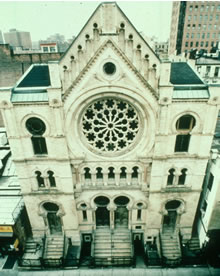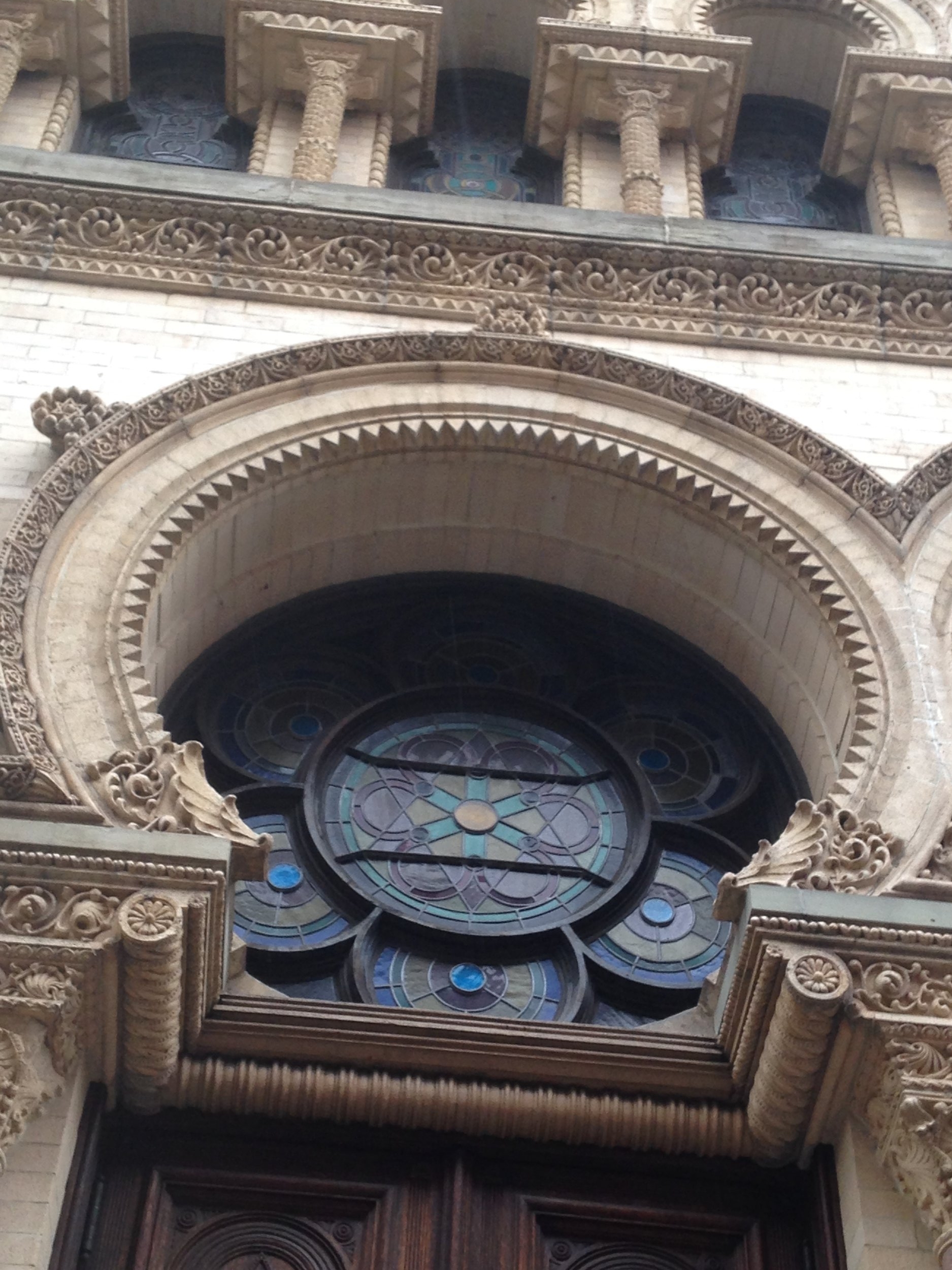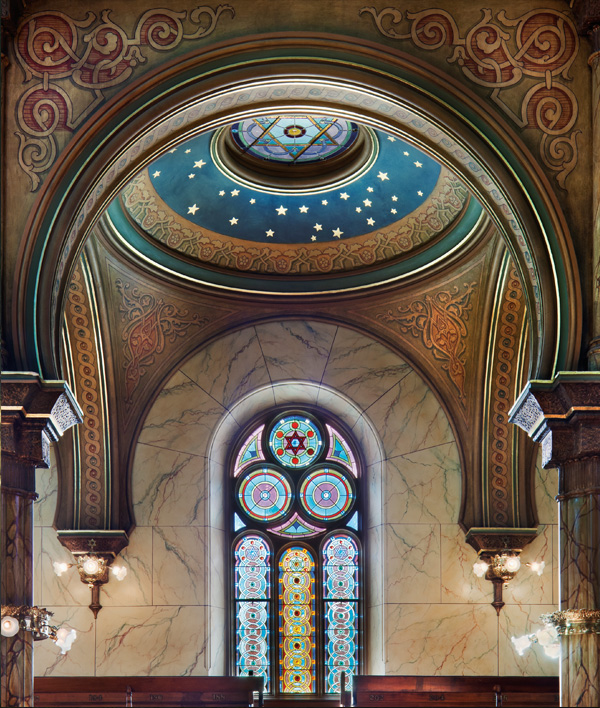Eldridge Street Synagogue
The First Grand House of Worship built by Eastern European Jews
The Eldridge Street Synagogue was designed by the Roman Catholic tenement builders Peter and Francis Herter. Its elaborate Star of David patterns set in terra-cotta bands, carved on the wooden doors and raised atop the roof-line finials, proudly announced its sacred function.
For its first forty years, the synagogue was sustained by a vital Lower East Side community comprised of lawyers, merchants, artisans, clerks, peddlers and laborers.
By the 1920s, the congregation, as economically and geographically mobile as earlier immigrants, had dispersed far beyond the Lower East Side, and immigration quotas stemmed the tide of arrivals. By the 1950s, a depleted but stalwart congregation could no longer afford the repairs needed to maintain the building, or even to heat its sanctuary, and met in the street level chapel.
In the 1970s and 1980s, the congregation still prayed in the street-level chapel, but the building itself was in disrepair. Hoping to preserve and ultimately restore the building, the journalist and preservationist Roberta Brandes Gratz and attorney William Josephson incorporated the not-for-profit, Eldridge Street Project (renamed the Museum at Eldridge Street).
In 2007, the Eldridge Street Synagogue once again became the magnificent edifice that had greeted worshipers 120 years earlier. Visitors can survey the same cream façade that immigrants beheld on opening day; inside they can marvel at the fifty-foot barrel-vaulted ceiling, the richly hued stained-glass windows, and the majestic carved-walnut ark, still lined in its original crimson velvet.
The Eldridge Street congregation is known as K'hal Adath Jeshurun with Anshe Lubz. On the Sabbath and holidays, congregation members never missed a Sabbath service.
On Sundays and weekdays, the Museum at Eldridge Street explores the context of their worship, explaining to visitors how the immigrant founders and their children lived, worked and prayed on the Lower East Side.
.

